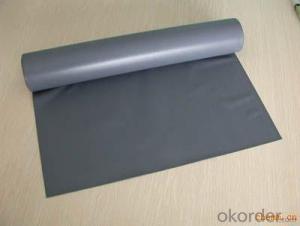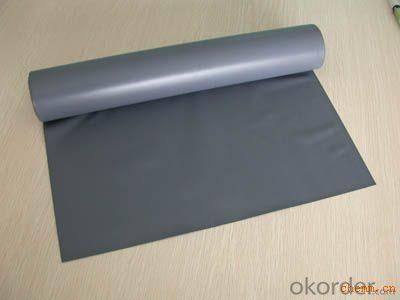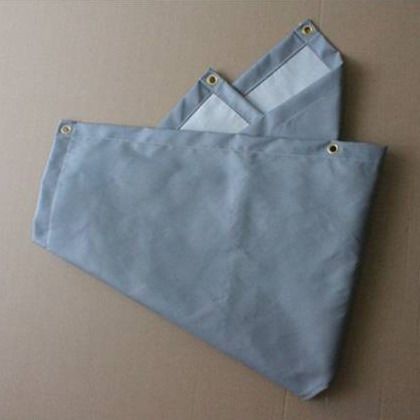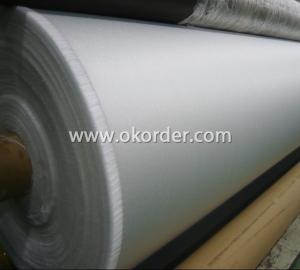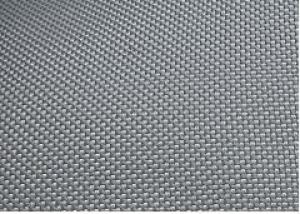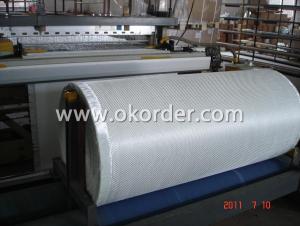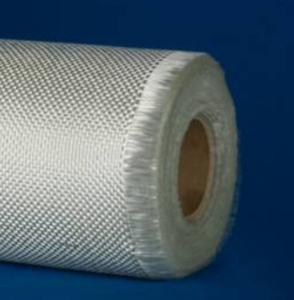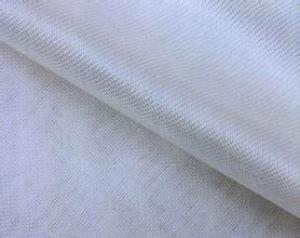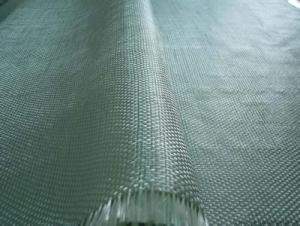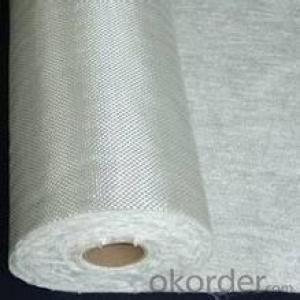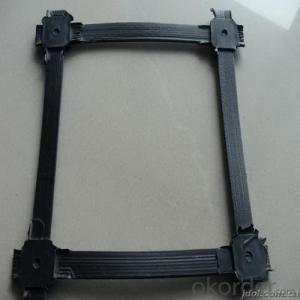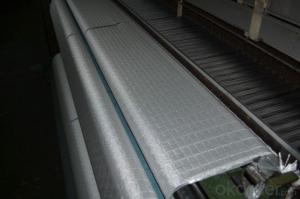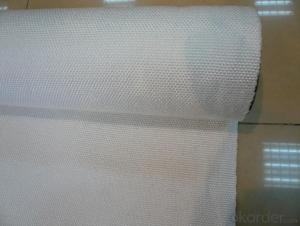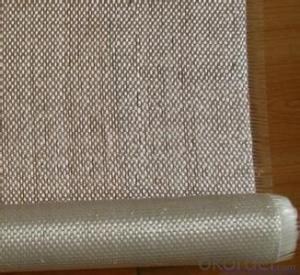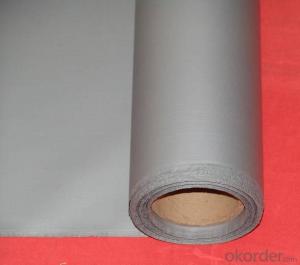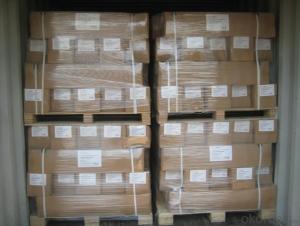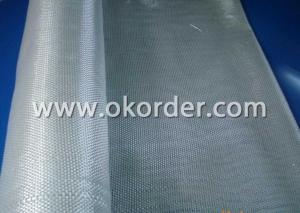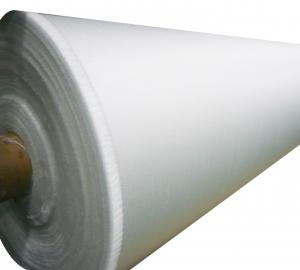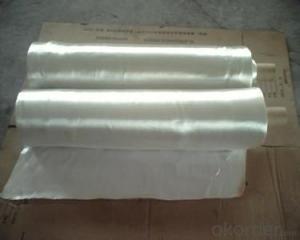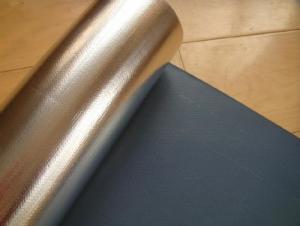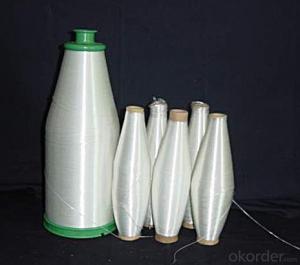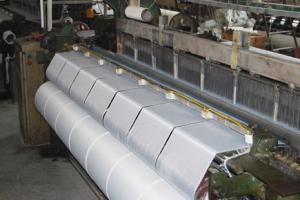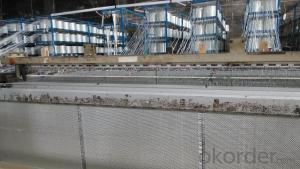High Quality Fiberglass Fabric Price - Silicone Coated Fiberglass Fabrics
- Loading Port:
- China Main Port
- Payment Terms:
- TT or LC
- Min Order Qty:
- 30 square meters m²
- Supply Capability:
- -
OKorder Service Pledge
OKorder Financial Service
You Might Also Like
1 Introduction:
Silicon coated fiberglass fabrics are the mutilfunctional thermal insulation material with high performance.

2.Properties
Advance coating technology and special formula contribute to the following advantages.
a:Superb electric insulation
b:Inert to majority of chemical reagents
c:Water repellent and oil repellent
d:Soft and pliable,easy to tailor and good processing performance
3.Application
Fireproof curtains, fireproof blanket
Thermal insulation and anti-corrosion for pipe
Welding protection
4 Specifications
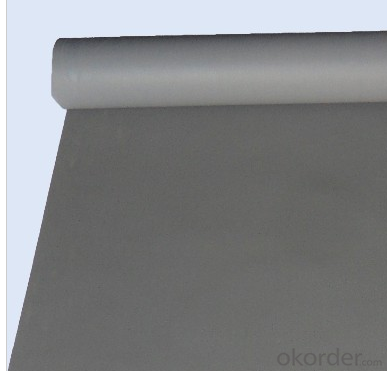
Product code | Thickness mm | Parting intensity (N/50mm) | Inflating burst intensity Mpa | Peeling intensity N/m | Capability of flameproof | Weight | |
Warp | Weft | ||||||
FGS-030-L | 0.30+0.03 | ≥1600 | ≥1200 | ≥1.2 | ≥450 | FV-0 | 400+40 |
FGS-035 | 0.35+0.03 | ≥1800 | ≥1400 | ≥1.2 | ≥450 | FV-0 | 470+50 |
FGS-045-L | 0.45+0.04 | ≥1800 | ≥1400 | ≥2.0 | ≥450 | FV-0 | 630+60 |
FGS-050 | 0.50+0.05 | ≥2000 | ≥1600 | ≥2.0 | ≥450 | FV-0 | 640+60 |
FGS-3784-080-L | 0.80+0.08 | ≥3000 | ≥2500 | ≥1.2 | ≥450 | FV-0 | 1000+100 |
FGS-110 | 1.10+0.10 | ≥3800 | ≥3400 | ≥2.6 | ≥450 | / | 1700+170 |
FGS-150 | 1.50+0.10 | ≥3200 | ≥2800 | ≥3.0 | ≥450 | / | 2300+3 |
Packaging:packed in rolls, with bubble bags and woven bags
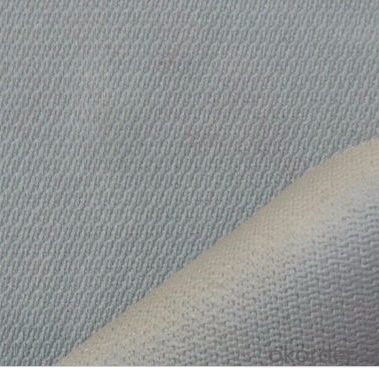
FAQ:
1.What is the delivery time ?
15days after receiving the deposit
2.Are you a trading company or factory.
We are factory,and we have more than 10 years of experience.
- Q: Are fiberglass fabrics resistant to UV degradation?
- Yes, fiberglass fabrics are generally resistant to UV degradation. The composition of fiberglass, which includes glass fibers, makes it inherently resistant to the harmful effects of UV radiation. This property allows fiberglass fabrics to maintain their strength and durability when exposed to sunlight over extended periods of time.
- Q: What are the differences between Geogrid, glass fiber network and geotextile?
- A grille is made of polypropylene, PVC polymer and thermoplastic or molded by two-dimensional grid or a certain height of the three-dimensional mesh screen, when used as a civil engineering, called geogrid. Engineering applications: highway, railway, abutment, approach road, wharf, dam, slag yard and other soft soil foundation reinforcement, retaining wall and pavement anti cracking projects, and other fields.
- Q: What are the different thickness options for fiberglass fabric rolls?
- There is a variety of thickness options for fiberglass fabric rolls to accommodate different applications and needs. Fiberglass fabric is typically measured in ounces per square yard (oz/yd²) or grams per square meter (g/m²). The range of common thickness options for fiberglass fabric rolls is from 4 oz/yd² (135 g/m²) to 10 oz/yd² (340 g/m²). These options are suitable for a wide range of general-purpose applications, including reinforcing composite materials, boat building, automotive repairs, and insulation. For lighter applications, thinner fiberglass fabric rolls are available, typically ranging from 1 oz/yd² (34 g/m²) to 3 oz/yd² (102 g/m²). These lightweight options are commonly used in industries where weight is a concern, such as aerospace, model-making, and hobbyist projects. On the other hand, thicker fiberglass fabric rolls are available for heavy-duty applications that require greater strength and durability. These options typically range from 12 oz/yd² (408 g/m²) to 30 oz/yd² (1017 g/m²) or higher. They are commonly used in industrial settings, such as reinforcing concrete, manufacturing pipes, tanks, and other structural components. It's important to note that the specific thickness options may vary depending on the manufacturer and supplier. Some manufacturers may also offer custom thickness options to meet specific project requirements. Therefore, it's advisable to consult with the supplier or manufacturer to determine the available thickness options for fiberglass fabric rolls.
- Q: How does fiberglass fabric perform in peel strength?
- Fiberglass fabric is known for its exceptional peel strength. Thanks to its inherent strength and durability, fiberglass can withstand substantial pulling forces without delaminating or tearing. The bond between the fiberglass fabric and the substrate is typically strong, resulting in high peel strength values. These qualities make fiberglass fabric an ideal choice for industries that require strong adhesion and resistance to peeling, like composite manufacturing, aerospace, automotive, and construction. Moreover, the flexibility and lightweight nature of fiberglass fabric contribute to its overall peel strength performance, enabling it to conform to different surfaces and maintain its integrity when subjected to stress.
- Q: What are the different strengths available in fiberglass fabric?
- Fiberglass fabric possesses exceptional strength and durability, rendering it a widely favored material across various industries. The strength of fiberglass fabric varies, contingent upon the type of fibers utilized and the weaving pattern employed. One notable strength of fiberglass fabric lies in its remarkable tensile strength, which alludes to its ability to endure stretching or pulling forces without succumbing to breakage. Fiberglass fabric with high tensile strength exhibits resilience against heavy loads and deformation, thus proving suitable for applications necessitating structural integrity. Another advantage of fiberglass fabric lies in its superb resistance to chemical corrosion. Fiberglass inherently boasts corrosion resistance, enabling it to endure exposure to diverse chemicals without deteriorating. This attribute renders fiberglass fabric an ideal choice for industries involved in chemical processing, oil and gas, and marine activities. Furthermore, fiberglass fabric demonstrates remarkable heat resistance, retaining its structural integrity and mechanical properties even when subjected to high temperatures. This strength renders fiberglass fabric well-suited to applications that entail exposure to extreme heat, such as insulation materials, fire-resistant barriers, and protective clothing. Moreover, fiberglass fabric exhibits commendable electrical insulation properties. It possesses a high dielectric strength, allowing it to endure high voltages without conducting electricity. This attribute makes fiberglass fabric suitable for utilization in the electrical and electronics industries, including insulating components and circuit boards. Additionally, fiberglass fabric is renowned for its lightweight yet sturdy characteristics. In comparison to materials with similar strength attributes, fiberglass fabric is relatively light in weight. This quality positions it as a preferred choice in industries where weight reduction holds significance, including the aerospace and automotive sectors. In summary, fiberglass fabric is available in various strengths to cater to the diverse needs of different industries. Its high tensile strength, resistance to chemical corrosion, heat resistance, electrical insulation properties, and lightweight nature make it an exceedingly versatile material for a wide array of applications.
- Q: Can fiberglass fabric be used for reinforcement in concrete structures?
- Yes, fiberglass fabric can be used for reinforcement in concrete structures. Fiberglass fabric, also known as fiberglass mesh, is made from woven fiberglass strands and is commonly used in construction applications. It offers several advantages as a reinforcement material in concrete structures. Firstly, fiberglass fabric has high tensile strength, which means it can withstand significant forces without breaking. This strength makes it capable of enhancing the durability and load-bearing capacity of concrete structures. It helps to distribute the load more evenly throughout the concrete, reducing the risk of cracks and structural failure. Secondly, fiberglass fabric is lightweight and easy to handle. Unlike traditional steel reinforcement, which can be heavy and time-consuming to install, fiberglass fabric is lightweight and can be easily cut, shaped, and applied. This makes it a convenient option for reinforcing different parts of a concrete structure, such as walls, columns, and beams. Additionally, fiberglass fabric is resistant to corrosion and does not rust like steel reinforcement. This corrosion resistance is particularly beneficial in environments that are exposed to moisture, chemicals, or other corrosive elements. By using fiberglass fabric, the risk of degradation and deterioration of the reinforcement over time is reduced. Furthermore, fiberglass fabric is non-conductive, which means it does not conduct electricity. This property can be advantageous in certain applications, such as in structures that require electrical insulation or in environments with electromagnetic interference. Overall, fiberglass fabric is a versatile and effective reinforcement material for concrete structures. Its high tensile strength, lightweight nature, corrosion resistance, and non-conductive properties make it a suitable choice for various construction projects. However, it is important to follow proper installation guidelines and specifications provided by manufacturers to ensure optimal performance and longevity of the reinforced concrete structure.
- Q: Can fiberglass fabric be used for reinforcement in bridge structures?
- Yes, fiberglass fabric can be used for reinforcement in bridge structures. Fiberglass fabric is a strong and durable material that has several advantages when used in the construction of bridges. One of the main benefits of using fiberglass fabric for reinforcement in bridge structures is its high strength-to-weight ratio. Fiberglass fabric is known for its exceptional strength, yet it is significantly lighter than traditional reinforcement materials such as steel. This makes it an ideal choice for bridges, as it reduces the overall weight of the structure while still providing the necessary strength and support. Additionally, fiberglass fabric is corrosion-resistant, which is particularly advantageous for bridge structures exposed to harsh weather conditions and environments. Unlike steel, which is susceptible to corrosion and rusting, fiberglass fabric is not affected by moisture, chemicals, or the elements. This not only extends the lifespan of the bridge but also reduces maintenance and repair costs over time. Another advantage of using fiberglass fabric for reinforcement in bridge structures is its flexibility and ease of installation. Fiberglass fabric can be easily molded and shaped to fit the specific design requirements of the bridge, making it a versatile material that can adapt to various structural configurations. It is also relatively simple to install, requiring less time and labor compared to traditional reinforcement materials. Furthermore, fiberglass fabric offers excellent durability and longevity. It has a high resistance to fatigue and can withstand heavy loads and repetitive stresses over time. This makes it a reliable choice for bridge structures that need to accommodate heavy traffic and constant usage. In conclusion, fiberglass fabric can indeed be used for reinforcement in bridge structures. Its high strength-to-weight ratio, corrosion resistance, flexibility, ease of installation, and durability make it an excellent alternative to traditional reinforcement materials such as steel. By utilizing fiberglass fabric, bridges can be constructed to be lighter, more resistant to corrosion, and longer-lasting.
- Q: Can fiberglass fabric be used for reinforcement in pharmaceutical tanks?
- Certainly! Fiberglass fabric proves to be an effective reinforcement option for pharmaceutical tanks. Renowned for its impressive strength-to-weight ratio and exceptional resistance to corrosion, chemicals, and extreme temperatures, fiberglass fabric emerges as an optimal material choice for fortifying tanks used in the pharmaceutical sector. Given that these tanks frequently encounter various chemicals and substances, these inherent properties of fiberglass fabric enable it to provide structural support, enhance tank durability and longevity, and ensure compliance with required safety standards. Furthermore, the lightweight nature of fiberglass fabric simplifies its handling and installation in tank applications. In conclusion, employing fiberglass fabric as a reinforcement solution in pharmaceutical tanks guarantees a dependable and efficient choice.
- Q: What is the cost range for fiberglass fabrics?
- The cost range for fiberglass fabrics can vary depending on various factors such as the quality, weight, and width of the fabric, as well as the supplier and any additional features or treatments applied to the fabric. On average, fiberglass fabrics can range from around $5 to $20 per yard. However, higher-end or specialty fiberglass fabrics with specific properties or finishes can be priced higher, with some reaching up to $50 or more per yard. It is important to note that these prices are approximate and may vary based on market conditions and individual suppliers. Additionally, bulk orders or wholesale purchases may offer discounts, so it is recommended to contact suppliers directly for accurate pricing information.
- Q: How does fiberglass fabric handle moisture and humidity?
- Fiberglass fabric is known for its excellent resistance to moisture and humidity. Unlike other materials, it does not absorb water or become weakened or damaged by exposure to moisture. This makes it highly durable and suitable for applications in high-humidity environments or areas prone to moisture.
Send your message to us
High Quality Fiberglass Fabric Price - Silicone Coated Fiberglass Fabrics
- Loading Port:
- China Main Port
- Payment Terms:
- TT or LC
- Min Order Qty:
- 30 square meters m²
- Supply Capability:
- -
OKorder Service Pledge
OKorder Financial Service
Similar products
Hot products
Hot Searches
Related keywords
